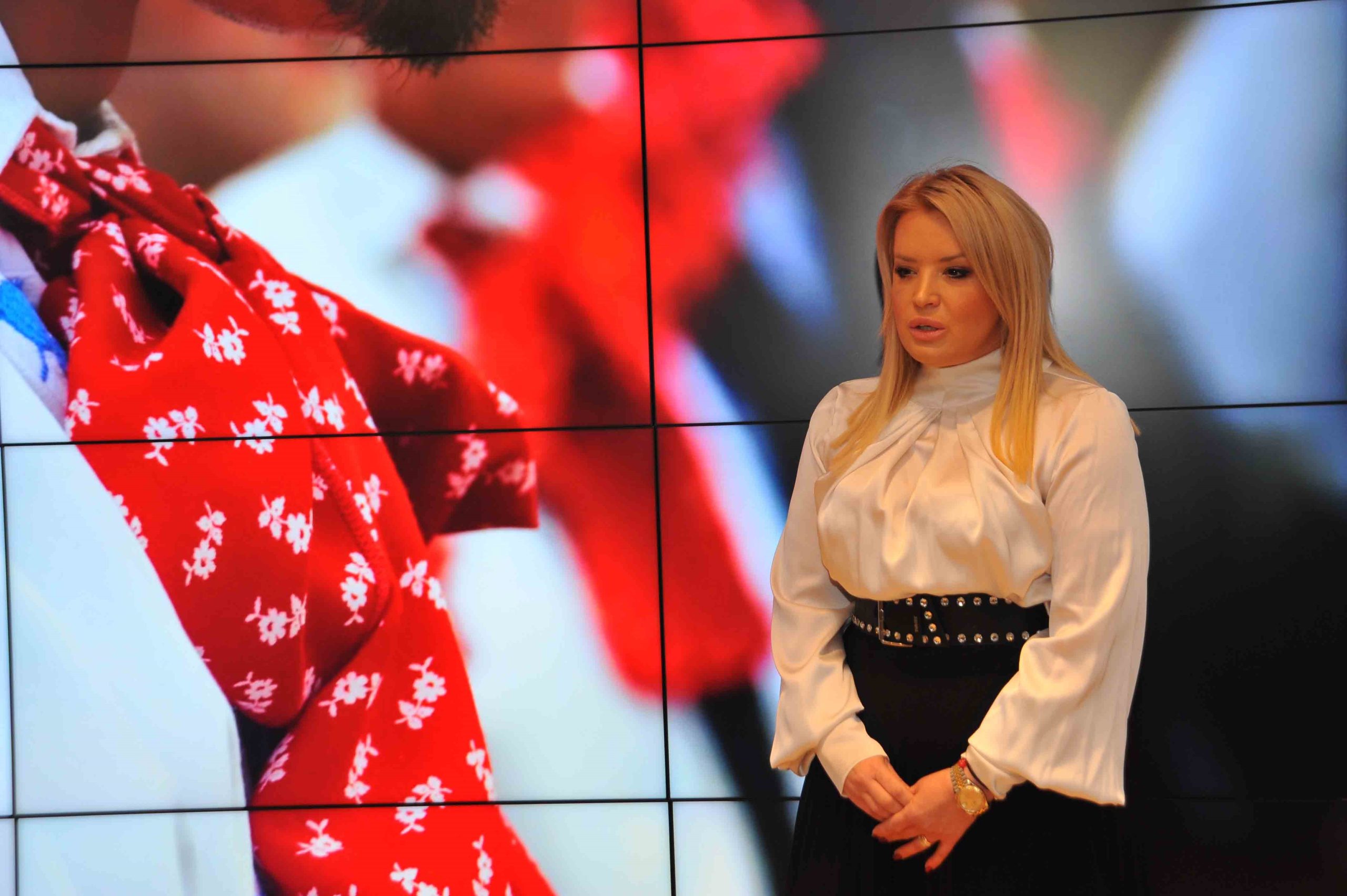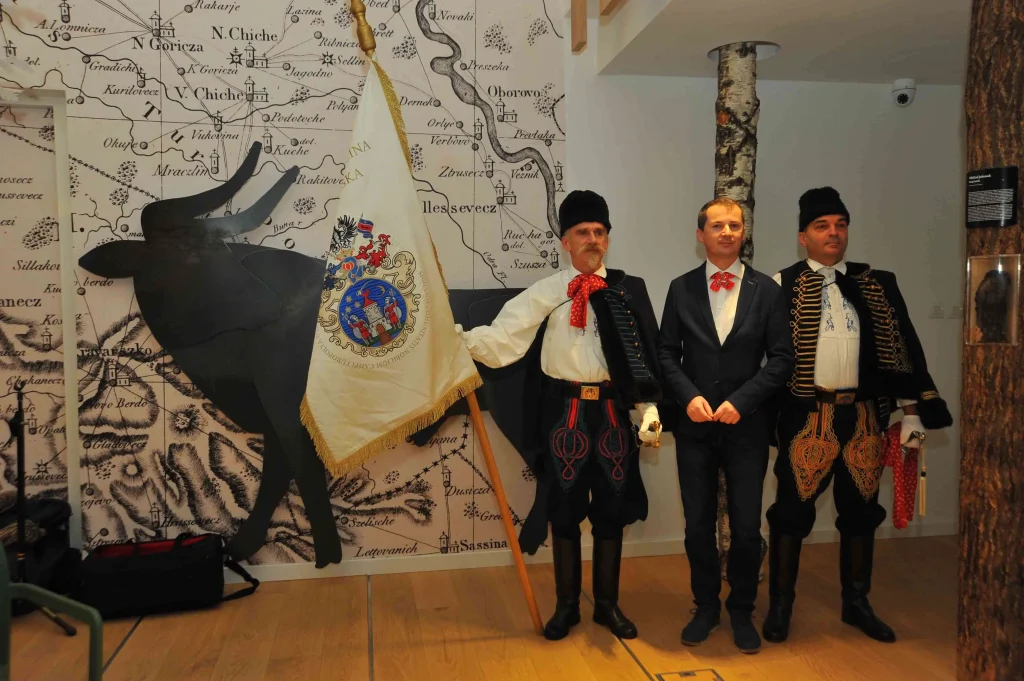This Croatian product was created on the Zagreb County Tourist Board initiative and combines tradition and modern trends to create a memory of the Turopolje region and daily fashion. The new souvenir was presented at the Velika Gorica Visitor Center by the Director of the Zagreb County Tourist Board Ivana Alilović, Mayor of Velika Gorica Krešimir Ačkar, prefect of the Noble Municipality of Turopolje Juraj pl. Odrčić, and representative of the Borboleta brand Sandra Šeparović.
“The souvenir introduces travelers to the local tradition and heritage, and emotionally connects them to unique experiences, sending messages about the beauty of the destination, legends, and lifestyle of the local community. The cooperation between the Zagreb County Tourist Board and the private sector has resulted in an authentic and original design that achieves a high level of recognition. On the other hand, the local population can identify with such a souvenir. As such, podgutnica and poculica were the best promoters of Turopolje because imbued with the creative idea of the Zagreb County Tourist Board, they are a souvenir which, in addition to a cool wearable product, also has a special packaging that reminds you of the destination,” said Ivana Alilović.
The bracelet with the motif of a podgutnica and poculica was realized by the Croatian brand Borboleta, known for its numerous collaborations that promote Croatian tradition in the world. The presentation was also attended by the Mayor of Velika Gorica Krešimir Ačkar, under whose auspices the project “Turopolje through objects of memory” was created.

Marko Čolić
“The Croatian origin of the tie is known worldwide today. Therefore, what we want in Velika Gorica and Turopolje is to present to all our visitors the link of Turopolje podgutnica and tie both through various events and symbolic features placed at the entrances to Velika Gorica,” said Mayor Krešimir Ačkar.
The presentation was led by the Croatian actress Nataša Janjić, who will undoubtedly wear a new bracelet with a motif on her arm.
“I am looking forward to Croatian products that are wearable, and I always prefer to choose them as part of my fashion combination. I support such promotions because I believe that we should preserve our tradition, but also present it to the world in the most beautiful form, such as bracelets, i.e., the souvenirs that we presented today in Velika Gorica.”
Poculica covered the heads of married women, and as a visible sign of her status, the ancient custom has been preserved to this day. Immediately after the wedding, the bride’s braids were wrapped around the nape of the neck, and her hair was covered with poculica.
Podgutnica is a scarf or decorated ribbon tied under the neck. It is a decorative accessory on today’s Turopolje folk costumes and part of the Turopolje Bandera uniforms. Podgutnica arose from the pride of Turopolje, the love of the Bandera man and his chosen one, and the longing of the soldiers for their beloved home. The nobles of Turopolje protected their region and Croatia, but they also had an obligation to participate in military campaigns for the kingdom. From the responsibility of the Noble Municipality of Turopolje to respond to the king’s call to war, the Turopolje Bandera was born.
Numbering 120 to 400 cavalry and infantry, they fought within the kingdom at their own expense and outside the borders at the king’s expense. The war military journey of the Turopolje people began several centuries before 1526, and the battles against the Turks on the Mohacs field, where we find the oldest records of the wars of the Turopolje people. Bandera is most often found on the Turkish border, in the Military Frontier (15th-18th century), and during the 17th and 18th centuries on the Italian, German, French, and Czech battlefields. As part of the Croatian army, they were among the Croats who took part in the Thirty Years’ War, and in the first part of the 17th century, they reached France.
Their handkerchief, which binds girls and women as a memory of home and a vow of love and fidelity, was noticed by the French and even King Louis XVI, who accepted it as a new fashion detail – a handkerchief tied in the Croatian way “a la Croate”. Given the historical tradition of the necktie’s origin, Turopolje’s military role in European wars, and the prevalence of podgutnica in Turopolje, we have every right to believe that Turopolje is the cradle of the necktie.
To read more about lifestyle in Croatia, follow TCN’s dedicated page.









